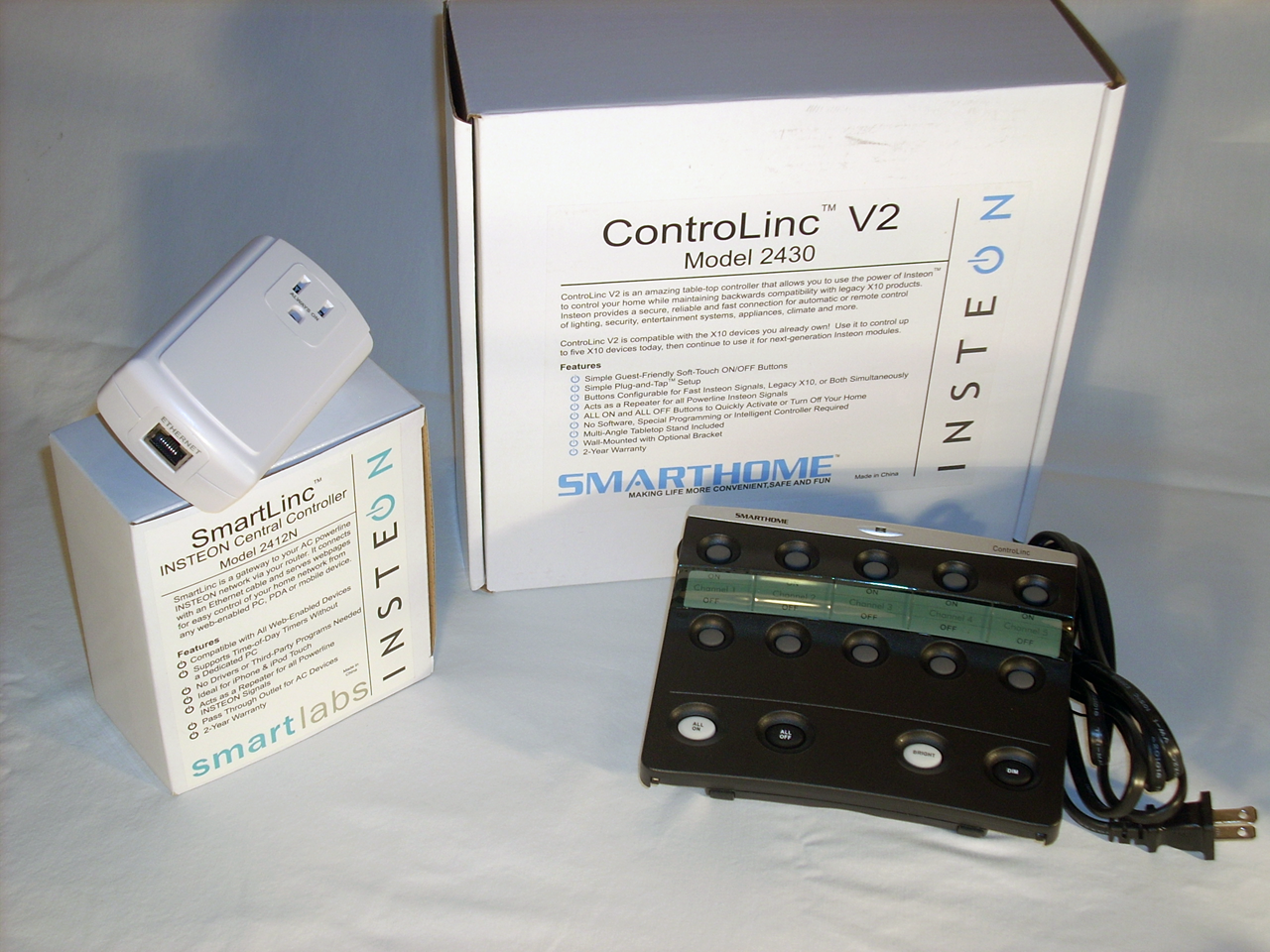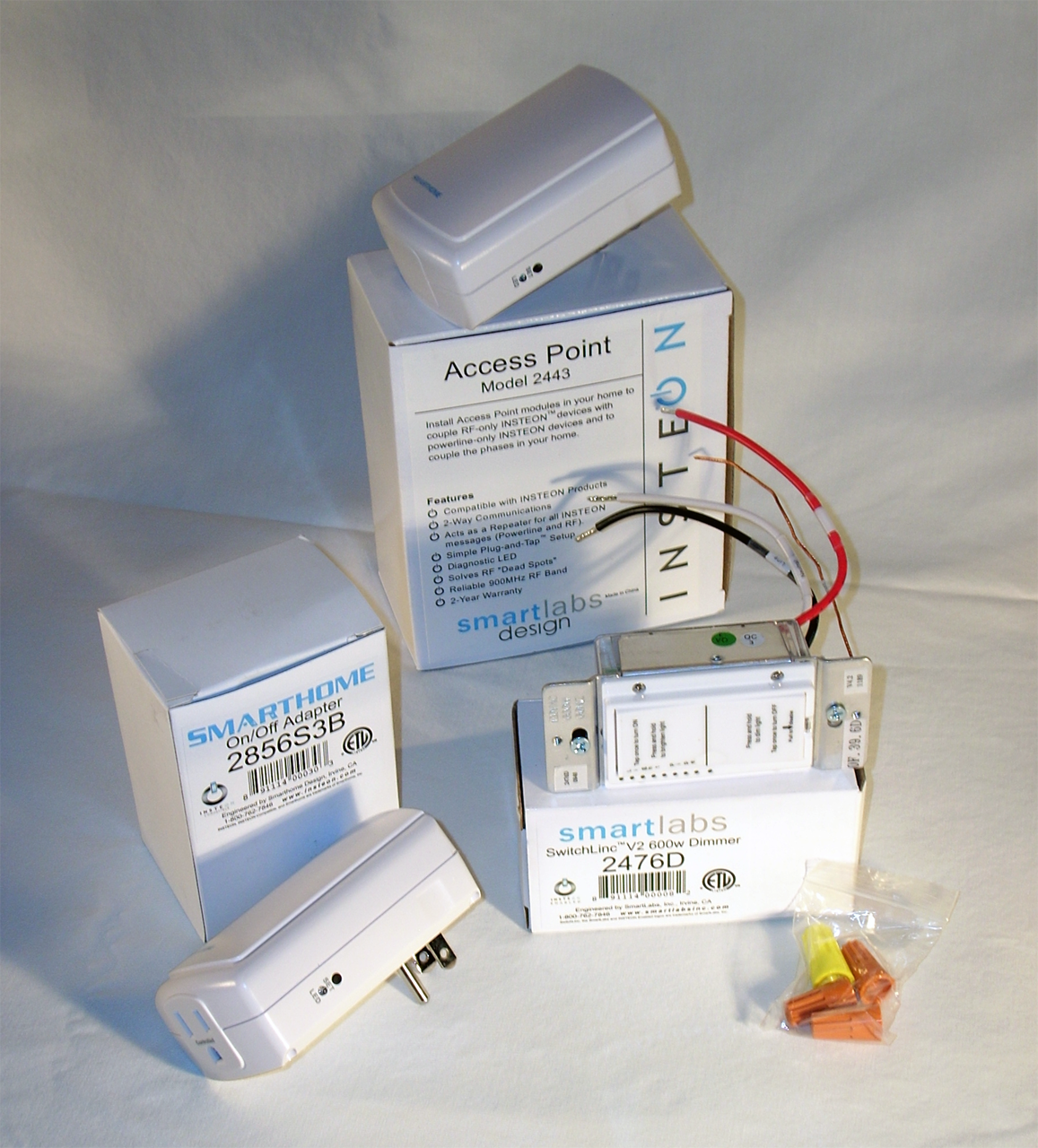Reader's Voice: An Introduction To Home Automation
Home Automation Protocols
What, exactly, can you do with home automation?
The most common project is to automate lights, thermostat settings, and irrigation, but you can also tie HA (Home Automation) into security systems using extra sensors, triggered lights, or other outputs. Your imagination and creativity may be your only limits. As for me, my budget was the determinant in how far I could go. Nevertheless, this is the story of a real-world home automation installation. Some of the options I had to bypass due to monetary constraints included thermostat control, voice interaction, irrigation, and home theater control.
Available Systems
Another factor (besides budget) in the planning process is picking a HA protocol on which to base a new system. There are four major players in HA, each with its own strengths and weaknesses.
X-10 has been around the longest, and is by far the least expensive. X-10 was originally designed to send its signals through existing power wiring, but was later adapted to transmit wirelessly as well. X-10 has a broad catalog of available devices, but its primary downfall is its lack of robustness. The problem is that the protocol is specified with one-way communication and includes no checks for commands making it through to the targeted device.
UPB was designed to counter X-10's weaknesses by utilizing a higher voltage and stronger signal. UPB is a powerline-only communication protocol, so some devices are much harder to install. In addition, a high cost for the technology has made UPB prohibitive to buy into, and has likely stunted the growth of the technology.
Z-wave is a newer protocol and is dependent on wireless signals at 908.42MHz (though that varies slightly depending on the country in which the device is intended for sale). Due to its wireless nature, it has become very popular for refitting older homes with home automation, and since it operates at ~900MHz there is no need to worry about wireless network interference. Some of the concerns of Z-wave are its proprietary technology, radio congestion with larger deployments, and low tolerance for failed, moved, or removed devices.
Get Tom's Hardware's best news and in-depth reviews, straight to your inbox.
Insteon is another newer protocol, and it utilizes both powerline and 915MHz wireless signals for a robust network. Each device acts a transceiver in that it will receive a signal and transmit the signal again if it is not the addressed device. Insteon can also communicate via X-10 signals, an ability that has made it popular for those who have already invested in X-10 and want to update to a newer, more robust protocol.
One of Insteon's caveats is that most of the wired-in devices require the neutral wires to be in the switch boxes. This type of wiring is generally not found in older homes. Insteon also released some switches earlier on that had a high failure rate, although they did extend the warranty on those and have replaced the model with a better switch.
So, now it's time to choose which protocol to use. X10 is not really a valid option for me, as it is not being developed anymore and lacks feedback. UPB is a niche market for the wealthier crowd, many of whom don't know how else to spend their money, and that's definitely not me either. That only leaves Z-wave and Insteon as valid options. If I had to guess, I would say one of these, if not both, will be around for a long time to come. But right now they are both fighting for recognition and market share. For my installation, I chose Insteon due to cost, availability, control options, and robustness.
Current page: Home Automation Protocols
Prev Page Interview With George Hanover, Continued Next Page Off To The Store: Shopping For HA-
Gin Fushicho Sounds like a lot of fun, though my Grandpa wouldnt like it , he likes to work too much. =/ He might like setting it up though.Reply -
Twoboxer IMO, the problem with "Home Automation" is thatReply
(a) it's fragmented
(b) most applications can be accomplished in most homes with less expensive, individual systems than with any integrated system - even if one existed.
HVAC: Unless you have a large home requiring multiple HVAC zones/thermostats, and unless parts of the home are unoccupied for varying amounts of time, a programmable thermostat is an adequate solution. Setbacks (eg while you are at work) don't seem to save much money with modern HVAC systems in most US climates.
Lighting: If "security" means cycling lights so the house looks occupied, again simple timers are adequate. Unless you have a large, multi-source lighted home, few need automated lighting and "scenes".
Irrigation: If you have any sprinkler system, once again timers and rain sensors do the job well enough.
And so on.
FYI, I have a large primary residence with a networked security system that also controls multiple thermostats. A dedicated PC has replaced a stand-alone DVR to monitor security cameras. A low-voltage, microprocessor controlled system controls lighting.
If these 8-year old systems talked to each other well, maybe I could use the motion detectors to automatically turn lights on and off. And maybe I wouldn't be better off using standard internet cameras to monitor security as I travel between homes.
Its all cool technology, but as a substantial user and tech-lover, I just don't see significant, practical application in most homes. -
Twoboxer Please forgive the double-post, but I couldn't resist pointing out one savings I learned about from all of this.Reply
I use a lot of 130V bulbs in the fixtures controlled by microprocessor controlled lighting system. Most of these bulbs are also oversized for their purpose, and are therefore set to run at, eg, 60% or 75% of maximum voltage when turned on.
I don't know whether I've saved any electricity or not - I doubt it lol - but I have saved a tremendous amount of money on bulbs. EG, there are 11 such bulbs in my kitchen ceiling and they run a minimum of 12 hours per day. I have not replaced a bulb in that set since they were installed over 8 years ago. -
mrubermonkey Buying proprietary systems is bad. Go with equipment that goes by industry standards and the whole issue with home automaton being a long-term investment goes away for the most part. Unless some company's proprietary technology always leads industry standards by leaps and bounds, but this is rare.Reply -
pratik77 If you want the real deal, go for Crestron.Reply
Sure it costs money but so does liquid nitrogen cooled overclocked gaming rigs. -
On the life of light bulbs . . . .Reply
Lamp life is very sensitive to operating voltage - for 120 volts Ge quotes 125 volts as shortening the lamp life to 1/2 and 130 volts to 1/3. The inverse is true - if you put a 130 volt lamp in a 120 volt circuit you can expect over double the lamp life, and if you have a dimmer to soft start then it can last a way lot longer.
http://www.gelighting.com/na/business_lighting/faqs/incandescent.htm -
How can you not mention http://www.CocoonTech.com, the largest DIY home automation site out there.Reply
-
sublifer cocoonerHow can you not mention http://www.CocoonTech.com, the largest DIY home automation site out there.It was mentioned on page 3:Reply
Many of the searches for further guidance landed me at cocoontech.com, and reading other people's guides and questions helped me through the process.

